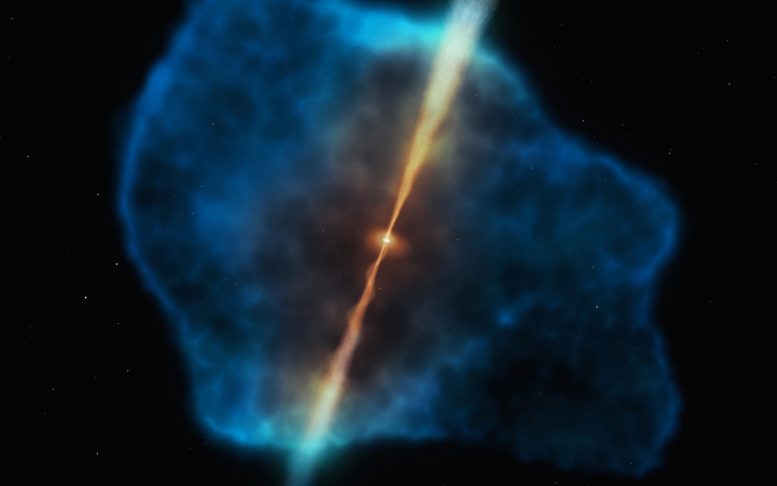
This illustration depicts a gas halo surrounding a quasar in the early Universe. The quasar, in orange, has two powerful jets and a supermassive black hole at its center, which is surrounded by a dusty disc. The gas halo of glowing hydrogen gas is represented in blue.
A team of astronomers surveyed 31 distant quasars, seeing them as they were more than 12.5 billion years ago, at a time when the Universe was still an infant, only about 870 million years old. They found that 12 quasars were surrounded by enormous gas reservoirs: halos of cool, dense hydrogen gas extending 100 000 light-years from the central black holes and with billions of times the mass of the Sun. These gas stashes provide the perfect food source to sustain the growth of supermassive black holes in the early Universe.
Credit: ESO/M. Kornmesser
Astronomers using ESO’s Very Large Telescope have observed reservoirs of cool gas around some of the earliest galaxies in the Universe. These gas halos are the perfect food for supermassive black holes at the center of these galaxies, which are now seen as they were over 12.5 billion years ago. This food storage might explain how these cosmic monsters grew so fast during a period in the Universe’s history known as the Cosmic Dawn.
“We are now able to demonstrate, for the first time, that primordial galaxies do have enough food in their environments to sustain both the growth of supermassive black holes and vigorous star formation,” says Emanuele Paolo Farina, of the Max Planck Institute for Astronomy in Heidelberg, Germany, who led the research published today in The Astrophysical Journal. “This adds a fundamental piece to the puzzle that astronomers are building to picture how cosmic structures formed more than 12 billion years ago.”
Astronomers have wondered how supermassive black holes were able to grow so large so early on in the history of the Universe. “The presence of these early monsters, with masses several billion times the mass of our Sun, is a big mystery,” says Farina, who is also affiliated with the Max Planck Institute for Astrophysics in Garching bei München. It means that the first black holes, which might have formed from the collapse of the first stars, must have grown very fast. But, until now, astronomers had not spotted ‘black hole food’ — gas and dust — in large enough quantities to explain this rapid growth.
To complicate matters further, previous observations with ALMA, the Atacama Large Millimeter/submillimeter Array, revealed a lot of dust and gas in these early galaxies that fuelled rapid star formation. These ALMA observations suggested that there could be little left over to feed a black hole.
To solve this mystery, Farina and his colleagues used the MUSE instrument on ESO’s Very Large Telescope (VLT) in the Chilean Atacama Desert to study quasars — extremely bright objects powered by supermassive black holes which lie at the center of massive galaxies. The study surveyed 31 quasars that are seen as they were more than 12.5 billion years ago, at a time when the Universe was still an infant, only about 870 million years old. This is one of the largest samples of quasars from this early on in the history of the Universe to be surveyed.
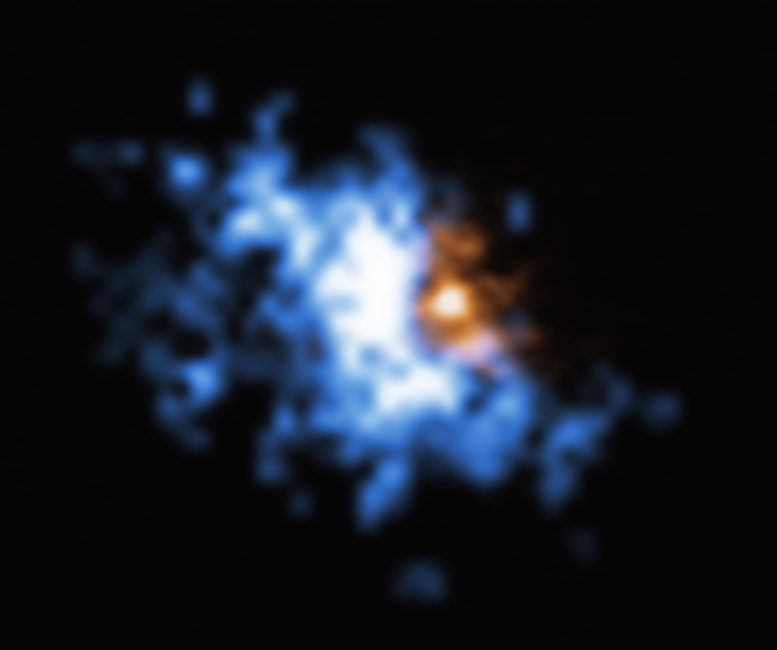
This image shows one of the gas halos newly observed with the MUSE instrument on ESO’s Very Large Telescope superimposed to an older image of a galaxy merger obtained with ALMA. The large-scale halo of hydrogen gas is shown in blue, while the ALMA data is shown in orange.
The halo is bound to the galaxy, which contains a quasar at its center. The faint, glowing hydrogen gas in the halo provides the perfect food source for the supermassive black hole at the center of the quasar.
The objects in this image are located at redshift 6.2, meaning they are being seen as they were 12.8 billion years ago. While quasars are bright, the gas reservoirs around them are much harder to observe. But MUSE could detect the faint glow of the hydrogen gas in the halos, allowing astronomers to finally reveal the food stashes that power supermassive black holes in the early Universe.
Credit: ESO/Farina et al.; ALMA (ESO/NAOJ/NRAO), Decarli et al.
The astronomers found that 12 quasars were surrounded by enormous gas reservoirs: halos of cool, dense hydrogen gas extending 100,000 light years from the central black holes and with billions of times the mass of the Sun. The team, from Germany, the US, Italy and Chile, also found that these gas halos were tightly bound to the galaxies, providing the perfect food source to sustain both the growth of supermassive black holes and vigorous star formation.
The research was possible thanks to the superb sensitivity of MUSE, the Multi Unit Spectroscopic Explorer, on ESO’s VLT, which Farina says was “a game changer” in the study of quasars. “In a matter of a few hours per target, we were able to delve into the surroundings of the most massive and voracious black holes present in the young Universe,” he adds. While quasars are bright, the gas reservoirs around them are much harder to observe. But MUSE could detect the faint glow of the hydrogen gas in the halos, allowing astronomers to finally reveal the food stashes that power supermassive black holes in the early Universe.
In the future, ESO’s Extremely Large Telescope (ELT) will help scientists reveal even more details about galaxies and supermassive black holes in the first couple of billion years after the Big Bang. “With the power of the ELT, we will be able to delve even deeper into the early Universe to find many more such gas nebulae,” Farina concludes.
This research is presented in a paper to appear in The Astrophysical Journal.
The team is composed of Emanuele Paolo Farina (Max Planck Institute for Astronomy [MPIA], Heidelberg, Germany and Max Planck Institute for Astrophysics [MPA], Garching bei München, Germany), Fabrizio Arrigoni-Battaia (MPA), Tiago Costa (MPA), Fabian Walter (MPIA), Joseph F. Hennawi (MPIA and Department of Physics, University of California, Santa Barbara, US [UCSB Physics]), Anna-Christina Eilers (MPIA), Alyssa B. Drake (MPIA), Roberto Decarli (Astrophysics and Space Science Observatory of Bologna, Italian National Institute for Astrophysics [INAF], Bologna, Italy), Thales A. Gutcke (MPA), Chiara Mazzucchelli (European Southern Observatory, Vitacura, Chile), Marcel Neeleman (MPIA), Iskren Georgiev (MPIA), Eduardo Bañados (MPIA), Frederick B. Davies (UCSB Physics), Xiaohui Fan (Steward Observatory, University of Arizona, Tucson, US [Steward]), Masafusa Onoue (MPIA), Jan-Torge Schindler (MPIA), Bram P. Venemans (MPIA), Feige Wang (UCSB Physics), Jinyi Yang (Steward), Sebastian Rabien (Max Planck Institute for Extraterrestrial Physics, Garching bei München, Germany), and Lorenzo Busoni (INAF-Arcetri Astrophysical Observatory, Florence, Italy).

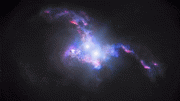

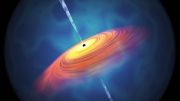
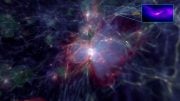
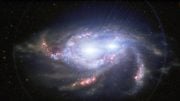
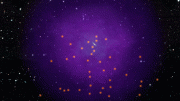
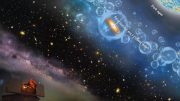
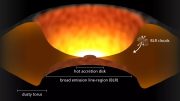
If these ‘matter’ halos of gas and undetermined dust are purported to be the perfect breakfast food for black holes in a primordial universe, then these black holes are finicky eaters. The alternative perspective of black hole dynamics hypothesizes that the whole matter is stripped apart at the black holes’ event horizon, disintegrating into ordinary matter and dark matter. By losing its ability to bond [via dark matter], ordinary matter is reduced to its smallest constituent components. The dark matter is then absorbed into the black hole, and any remnants of ordinary matter are eventually radiated out at high velocity back into the cosmos. And if the black holes are nothing but dark matter, then it would also follow that dark matter can be accumulated, separate of ordinary matter. It would therefore also follow that the gravitational force is more representative of negative density mass than positive density mass. [As presented in the book, The Evolutioning of Creation: Volume 2]
It’s awesome that you are 💯 right